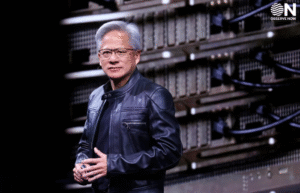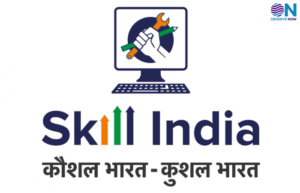In a world where generative AI evolves faster than most companies can react, Tushar Bhatnagar, Co-Founder and CTO of vidBoard.ai, is already reprogramming the rules of customer engagement. From real-time video rendering to privacy-respecting synthetic media, his startup operates at the cutting edge of deep tech—where every microsecond counts and every data point is sacred.
In this exclusive interaction with ObserveNow, Bhatnagar breaks down what it really takes to stay ahead in today’s AI-native product landscape. With a background spanning IoT, EVs, drones, and enterprise software, he brings a cross-disciplinary lens to building scalable AI infrastructure, managing user trust, and iterating with uncommon clarity. His philosophy? Build like you’re always behind—because that’s the only way to stay ahead.
Question 1:
As a startup, how do you continuously redefine customer experience to anticipate evolving user expectations and maintain a leading position in a rapidly changing digital landscape?
Generative AI has completely shifted the paradigm over the last few years, and we have adapted fast to this. At both Alpha AI and vidBoard.ai, we are absolutely ruthless and focused about listening to our users. Every bit of feedback is gold. Every domain always taught us one thing: the end user is your loudest signal as well as supporter. We treat user interactions like data points, something to analyze, break down, and optimize continuously. Expectations today shift at lightning speed, especially within the AI space. So we don’t just keep our ears open, we build systems around early signals and trends, conduct tight feedback loops, and run experiments in the open with the public in some form or the other. This is not just guesswork, it is structured anticipation.
Redefining CX involves a continuous cycle of building, testing, observing, eliminating ineffective elements, and amplifying successful ones, rather than focusing solely on features. Our flexible roadmap is shaped by real-world usage and feedback, not internal assumptions. We prioritize outcomes, operate collaboratively with early adopters, challenge our assumptions, and embrace iteration to remain relevant and drive change.
Question 2:
What role does data privacy play in vidBoard.ai’s product development cycle? How do you position consumer-centric data privacy in your organisation?
Data privacy isn’t an afterthought at vidBoard.ai, it is there from foundational level. When you are building deep tech tools that operate with human likeness, voice, and motion, like we do, a user’s trust becomes your only real currency. We treat privacy not just as compliance, but as a product principle.
From day one, we have implemented privacy-by-design practices. That means privacy considerations are baked into architecture, infrastructure, and workflows right from prototype. Every new feature goes through internal reviews not just for functionality or UX, but for data risk and exposure. We question every single data point we collect: do we need it, can it be anonymized, can it be encrypted, can it be deleted on user demand?
We also give users complete control over their data. Whether it’s facial footage, voice samples, or generated content, they can delete, export, or restrict use with clarity and ease. And we don’t do shady business behind the scenes, no silent analytics, no surprise model training. So to sum it up: data privacy is not a checkbox. It’s non-negotiable. It’s embedded in how we build, how we ship, and how we stay trusted.
Question 3:
How are you strategically leveraging data across all touchpoints to not only personalize user experiences but also to inform product development and market expansion initiatives?
At both Alpha AI and vidBoard.ai, data for us is not just fuel as the norm these days suggests, it’s feedback. We treat every user interaction, every click, every drop-off, and every conversion as a potential indicator. These indicators form the basis of how we personalize experience and guide strategic decisions across the board.
On the personalization front, we segment and analyze usage patterns to identify not just what users are doing, but why. Whether it’s how a user renders a video or interacts with a chatbot or custom avatar and what not, we use those insights to tweak interfaces, recommend actions, and serve contextual content that shortens the path to end user value.
We use closed-loop feedback systems to inform product development, focusing on feature utility, adoption, and impact. This data drives our sprints, dictating what to build, remove, or enhance, ensuring no superfluous features. Data shapes our building, serving, and growth, with diverse sources adding depth to our decisions. Every interaction refines the next.
Question 4:
What are the challenges of implementation of AI and its derivatives like Gen AI, and Agentic AI in your line of business?
Implementing AI, especially Gen AI and Agentic AI, comes with a unique mix of promise and pain. At Alpha AI and vidBoard.ai, we sit at the intersection of user-facing applications and deep tech infrastructure, so we see all those cracks up close.
First, there’s the obvious challenge of compute. Running inference-heavy Gen AI models in real-time, at scale, without burning a hole in your balance sheet is not trivial. Most open-weight models still demand significant GPU resources, and optimization and cost efficiency become a daily obsession.
Gen AI models face several challenges: inconsistency, which adds technical debt and slows market speed; high user expectations, necessitating transparent communication; and compliance/ethical concerns like deepfakes, requiring built-in verification. These solvable challenges demand vigilance, technical expertise, and honesty about AI’s current capabilities.
Question 5:
Are there any particular infrastructural challenges that you face?
Absolutely, and they hit you at multiple layers all the time. At Alpha AI and vidBoard.ai, infrastructure isn’t just about servers and bandwidth. We’re dealing with inference-intensive models, rendering pipelines, and content delivery at scale. That means our infra stack has to do some serious heavy lifting, consistently. All the time.
GPU availability, latency, load balancing, versioning, rollback, and monitoring are ongoing challenges for AI infrastructure. Our infrastructure is a full-stack orchestration challenge, not just technical plumbing, and must be treated as a core product to prevent system-wide failures.
Question 6:
In what ways is AI transforming enterprise customer experience strategies? Furthermore, what are the primary hurdles to overcome when implementing and expanding AI solutions within cloud-based infrastructures?
AI is fundamentally reprogramming how enterprises think about customer experience. It’s no longer about one-size-fits-all journeys. AI allows businesses to personalize at scale, adapt in real time, and proactively solve problems before they even surface. At Alpha AI and vidBoard.ai, we’ve seen this shift up close. Intelligent workflows, dynamic content rendering, conversational agents, and real-time recommendations are no longer perks at all, they’re expectations.
AI predicts user behavior, transforming customer experience from reactive to predictive. However, cloud-based AI expansion faces hurdles: latency due to compute-heavy tasks, complex data governance for sensitive enterprise data across regions, and immature model management tools for versioning, rollback, and fine-tuning. Integrating AI with legacy systems also requires extensive orchestration. True AI transformation demands technical, cultural, and strategic effort, not just plug-and-play.
————
For Tushar, AI isn’t just a feature—it’s the foundation. Whether it’s taming hallucinations in GenAI models, localizing infrastructure for real-time rendering, or embedding privacy at the architectural level, vidBoard.ai’s approach is refreshingly unglamorous: test rigorously, listen obsessively, scale responsibly.
As the generative AI wave accelerates, leaders like Bhatnagar remind us that sustainable innovation doesn’t come from racing to release—it comes from relentlessly refining what already works. In a sector obsessed with novelty, his superpower is discipline—the discipline to treat AI not as magic, but as a system that must be debugged, secured, and constantly rebuilt for the user it serves.





























